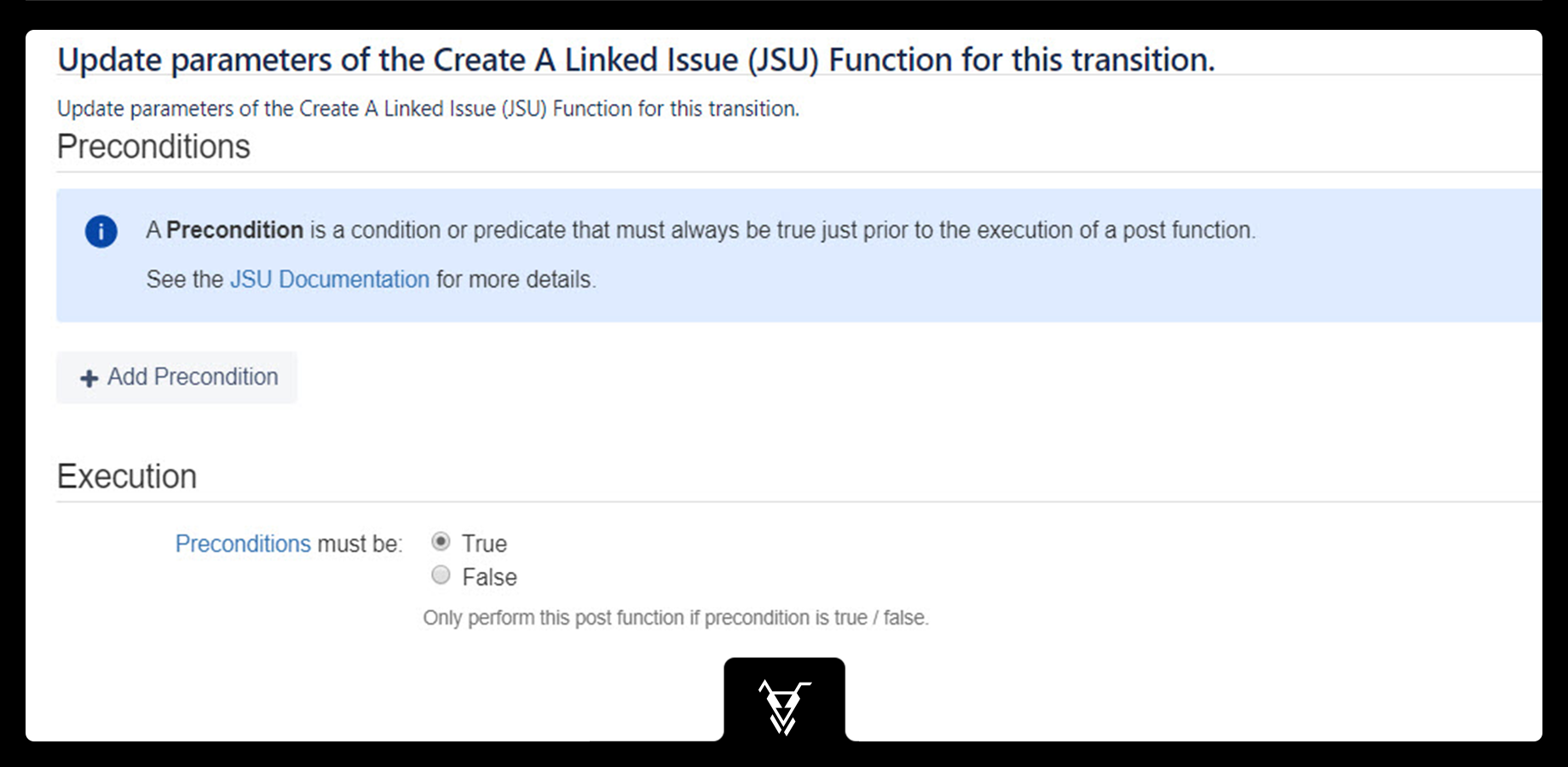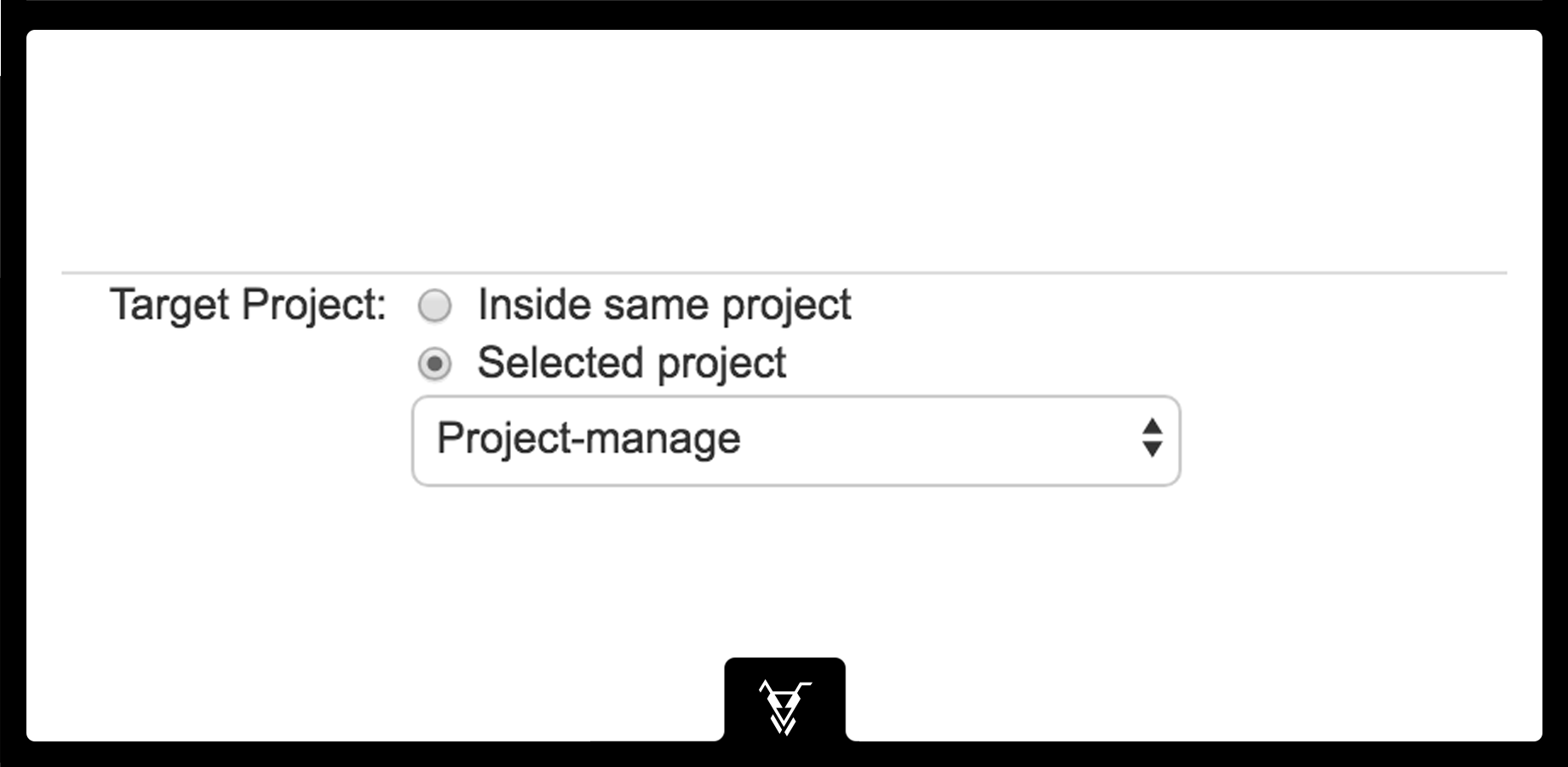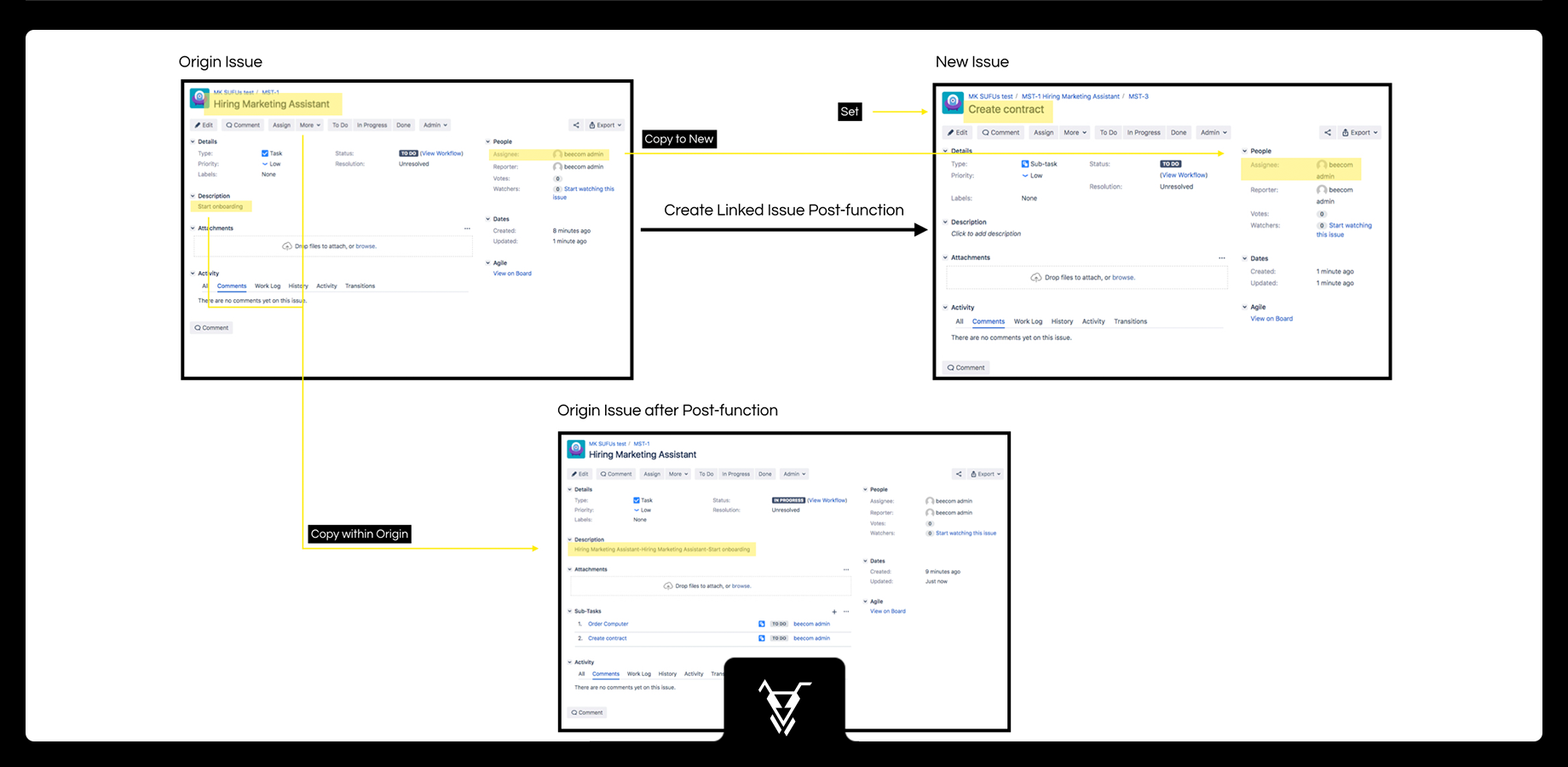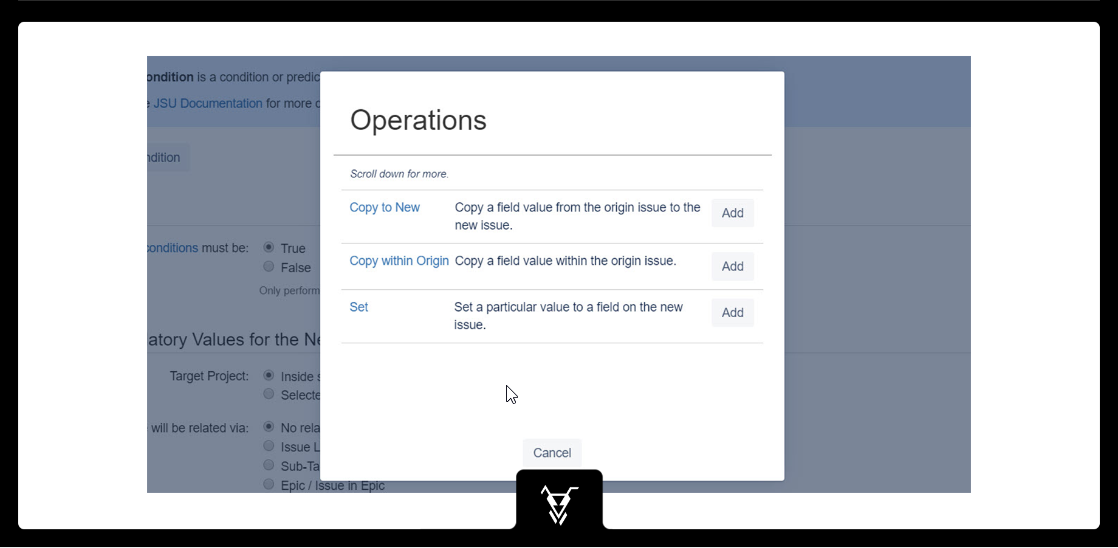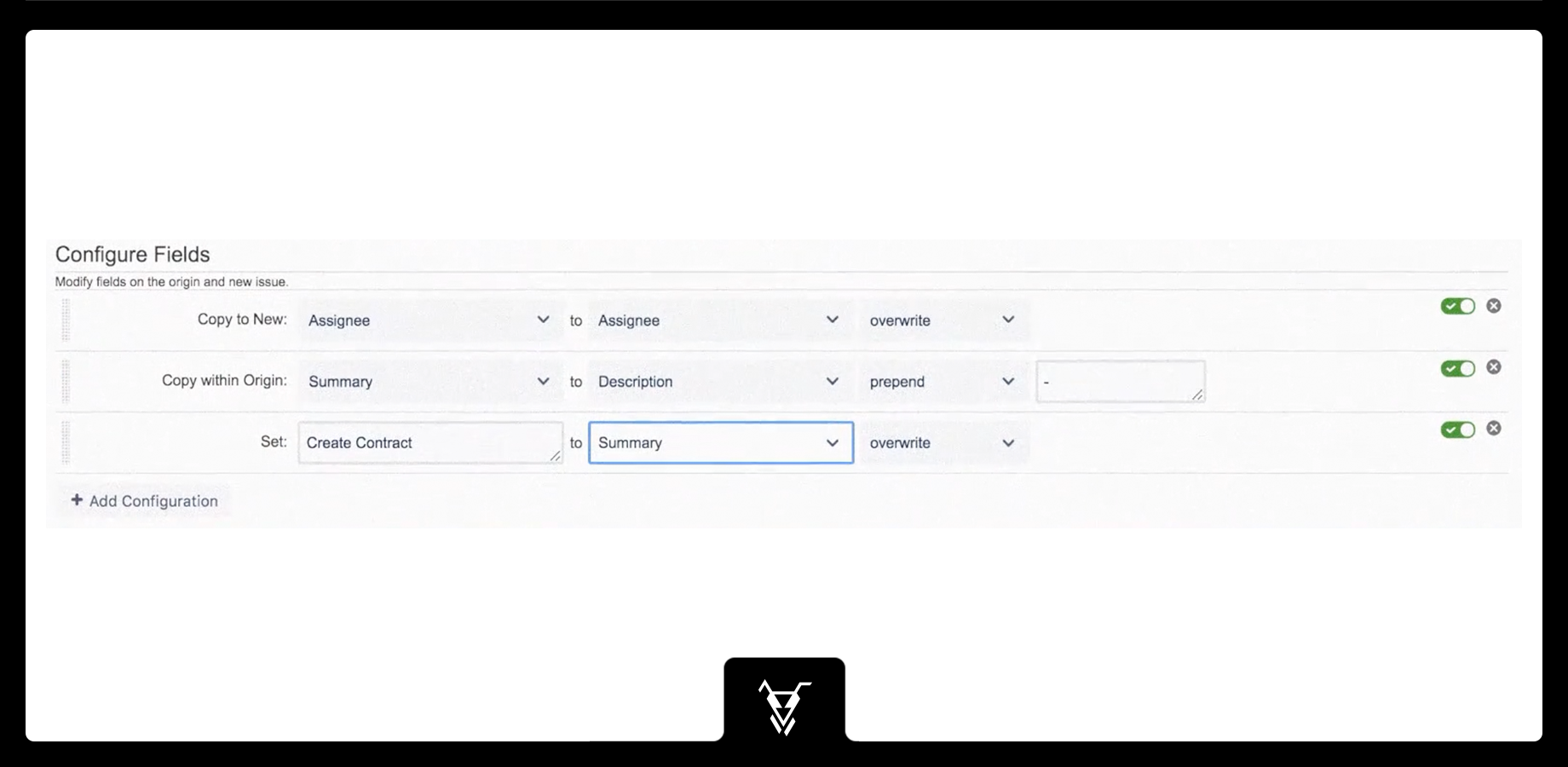| Panel | ||||||||||
|---|---|---|---|---|---|---|---|---|---|---|
| ||||||||||
This is the documentation of JSU for Jira Cloud. If you are using JSU on Jira Server or on Jira Data Center, you can find the documentation here. |
...
Description
This post function will create a new issue. The new issue will be linked to the origin issue (the one, which triggered the 'Create a Linked Issue' post function).
Any number of fields can be copied to the new issue and within the origin issue.
See the Testing and Fixing Bugs use case for an example how several of our customers are using this post function. The video on that page shows you the following sample configuration in action.
Configuration
Precondition
| Include Page | ||||
|---|---|---|---|---|
|
Initial Mandatory Values for the new Issue
Here you must configure some always mandatory fields for an issue. These are some real basic field of Jira. Be aware that your Jira configuration might have additional required fields (you should set them all by Copy Field Section) .
Additionally the summary will always be copied from the origin issue to the new issue. The reporter of the new issue will always be set to the user who triggered the current transition (and thus this post function). However you might overwrite them again later with Copy from the Origin Issue to the New Issue
Target Project
Target Project can be set to:
Inside same project
A new issue will be created in this same project
Selected Project
A new issue will be created in the selected project.
This Issue will be related via
Since JSU Cloud 1.1.0 The Create a Linked Issue post function allows you the create new issues, which are connected not only with an issue link, but instead also in a parent / sub-task, as well as epic / issue in epic relation.
See Releated Issues for more explanations on this topic (especially for creating sub-tasks).
Perform As User
| Include Page | ||||
|---|---|---|---|---|
|
Issue Type
A new issue type will have a particular issue type.
Be aware, that the issue type you configure here must be available in the target project.
Configure Fields
In JSU you can define configurations in order to modify fields on the origin and new issue, only available for Create Linked Issue Post function.
Definition of Terms for the Configure Fields Objects
This chapter provides you with definitions of the basic terms in Configure Fields.
- Origin issue: Issue that triggered the post function
- New issue: Issue to be created by the post function which was triggered on the origin issue
Choose your Field Configuration
Click the "Add Configuration" button and insert the operation you want to execute.
The following operations are available:
Organizing Operations
You can configure any number of configurations. They are executed sequentially.
You can rearrange the configurations by dragging in the line using the handle on the left.
You can also disable a configuration by unchecking the enabled flag next to the delete button. Your operation will remain on your configuration but will be ignored.
Example
Let's say you are a Hiring Manager and you are onboarding a new Marketing Assistant.
Your tasks to complete the onboarding would then include
- Create new contract
- Order new computer
First, you create your origin issue which you’ll call Hiring a Marketing Assistant. Instead of manually creating linked issues and copying/setting field values, JSU’s New Set of Operations can help automate these tasks.
On adding the "Create Linked Issue" post-function to the "In progress" transition, configure the fields you prefer with the help of the 3 New JSU operations:
- Copy a field value from the origin issue to a new linked issue
- Copy the value from one field to another field within the origin issue, and
- Set value of a field in a new linked issue
First, you can copy a field from the origin to the new issue. Let's copy the assignee of the task to the assignee of the sub-task. Then, you can copy a value from a field of the origin issue to another field of the origin issue. We'll try it by copying the summary to the description prepending it with a dash. Configure the last operation by setting a value for the summary of the new issue. We'll set it to "Create contract"
When you are done with your configuration, add your post function. You can do the same for as many sub-tasks as you want to have automatically created. Finally, publish your workflow and go back to your issue. Put it in progress and see the magic of the JSU new set of operations!
Asynchronous Execution
| Include Page | ||||
|---|---|---|---|---|
|
Example
See the Use Case Testing and Fixing Bugs for a nice example, how several of our customers use it. The video on that page shows you the following sample configuration in action.
Supported Field Types
| Include Page | ||||
|---|---|---|---|---|
|
...
